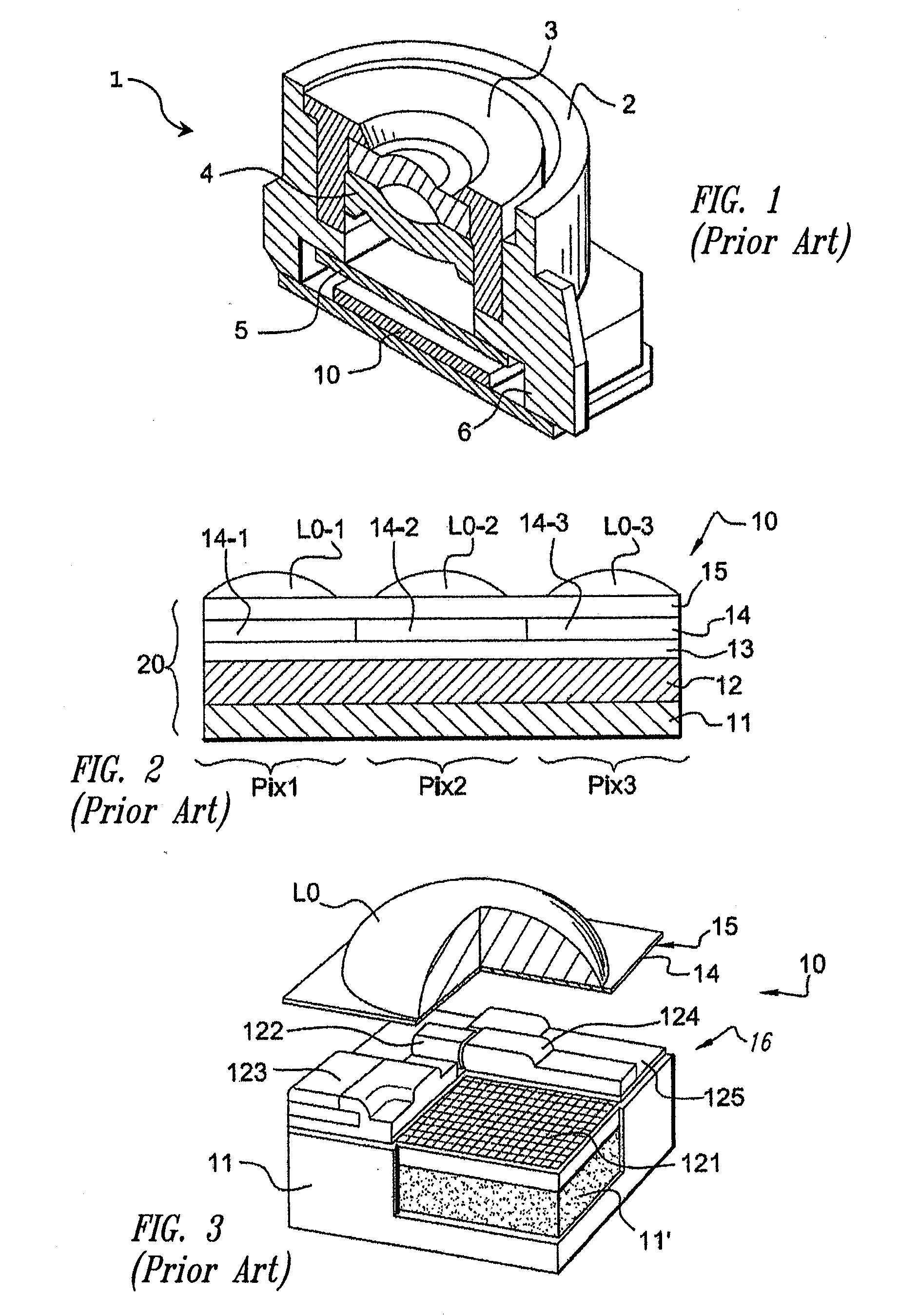CMOS imaging device comprising a microlens array exhibiting a high filling rate
a microlens array and imaging device technology, applied in the field of cmos imagers, can solve the problems of poor imager yield (ratio between the received light energy and the light energy collected and transformed into electric voltage), poor quality of low-resolution image sensors, and low brightness of supplied images
- Summary
- Abstract
- Description
- Claims
- Application Information
AI Technical Summary
Benefits of technology
Problems solved by technology
Method used
Image
Examples
Embodiment Construction
Structure of a Microlens Array According to One Embodiment
[0082]FIG. 6 is an abstract representation of a microlens array according to one embodiment, in top view. The shape of the microlenses in top view corresponds to the shape of the microlenses bases. The array comprises microlenses of a first type L1, or microlenses L1, made according to a first template G1, and microlenses of a second type L2, or microlenses L2, made according to a second template G2. The templates are shown in dotted lines whereas the microlenses bases are shown in continuous lines.
[0083]The microlens array has the following general features:[0084]the templates G1 and G2 are circles of radiuses R1 and R2 and are alternately arranged according to rows and columns of the array, indicated by horizontal and vertical dotted lines forming a network,[0085]the distance between the center of a microlens L1 and the center of an adjacent microlens L2 is equal to the pitch Pch of the photosite (pixel) array of the corres...
PUM
 Login to View More
Login to View More Abstract
Description
Claims
Application Information
 Login to View More
Login to View More - R&D
- Intellectual Property
- Life Sciences
- Materials
- Tech Scout
- Unparalleled Data Quality
- Higher Quality Content
- 60% Fewer Hallucinations
Browse by: Latest US Patents, China's latest patents, Technical Efficacy Thesaurus, Application Domain, Technology Topic, Popular Technical Reports.
© 2025 PatSnap. All rights reserved.Legal|Privacy policy|Modern Slavery Act Transparency Statement|Sitemap|About US| Contact US: help@patsnap.com



